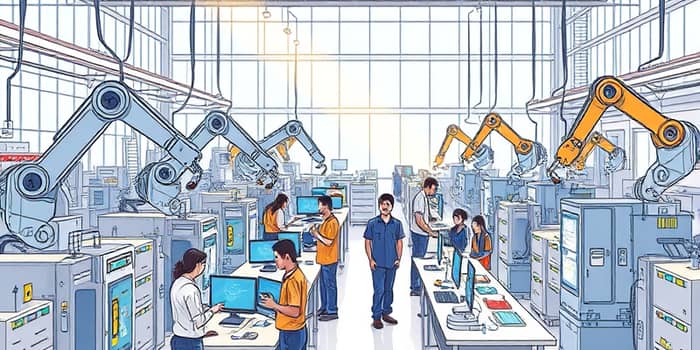
The global labor market is undergoing a profound shift as talent scarcity reaches historic levels. With employers scrambling to fill critical roles and reimagining workforce design, production strategies are adapting rapidly. From automotive assembly lines to high-tech manufacturing hubs, the assumption of plentiful workforce availability guided planning and investments for decades. Today, that paradigm is fading, replaced by an urgent need to balance agility, cost control, and human capital. As we navigate this era of scarcity, leaders are finding that workforce innovation is no longer an optional advantage but a critical business imperative.
In early 2025, labor scarcity has steadily intensified, affecting industries across the United States and around the world. 70% of U.S. employers report difficulty filling vacancies, marking a persistent challenge since the post-pandemic era. Simultaneously, 75% of employers worldwide say they cannot find the talent they need, a figure nearly double what was recorded in 2015. Underlying these numbers is a steadily low participation rate of 62.7% in the U.S. labor force, while job openings remain nearly one million above the available workforce. As vacancies outnumber qualified candidates, companies are forced to rethink traditional assumptions about staffing, training, and operational continuity.
The scarcity of workers is not evenly distributed; some fields face unprecedented hiring challenges while others maintain stable talent pools. Regions such as the Netherlands have recorded shortages in nearly 200 occupations, underscoring the complexity of aligning local skills with industry demands.
Each of these areas suffers from unique challenges, but together they highlight a widespread misalignment between job requirements and available skills.
The labor crunch is rooted in both demographic and systemic trends that have accelerated over the past decade:
Addressing these root causes requires systemic collaboration between government, educators, and industry partners. Only by bridging demographic shifts with targeted policy interventions and innovative workforce programs can we hope to restore equilibrium.
The inability to fill open positions has had measurable economic costs. In the United States alone, labor shortages have shaved approximately $740 billion from annual sales revenue, equivalent to a 2.1% decline. Supply chain bottlenecks have disrupted manufacturing timelines and retail deliveries, driving price volatility. FedEx, for example, estimated a $450 million annual revenue reduction due to labor unavailability, while the IMF calculated a 1.2% downward impact on U.S. GDP growth in 2022.
Key statistics illustrate the severity of the situation:
As these gaps persist, stakeholders must weigh short-term remedies against long-term productivity and growth goals.
Faced with labor pressures, companies are deploying multi-faceted approaches to maintain and enhance production capacity:
By integrating these tactics, organizations can create more agile, responsive production systems that thrive amid uncertainty.
Despite these positive steps, obstacles remain. Some reported shortages reflect a reluctance to offer competitive wages or improve working conditions, rather than a true absence of candidates. High stress levels and burnout continue to drive chronic turnover and burnout in critical frontline roles, exacerbating replacement demands even when markets stabilize. Additionally, over half the global workforce still lacks adequate social protection, leaving many communities vulnerable to economic shocks.
Looking ahead, the World Economic Forum forecasts a net gain of 78 million jobs by 2030, driven largely by growth in green technologies, care, education, and digital sectors. Over the coming decade, 170 million new roles will emerge while 92 million existing positions undergo transformation. Organizations that prioritize lifelong learning, build robust talent pipelines, and foster environments of psychological safety will be best positioned to capitalize on emerging opportunities.
Labor shortages are reshaping production strategies in profound ways. From accelerating automation to reimagining talent models, companies must embrace holistic, forward-looking solutions that balance efficiency with employee well-being. By investing in people, processes, and technology, organizations can turn today’s constraints into tomorrow’s competitive advantage. As the landscape continues to evolve, staying agile, compassionate, and strategic will be key to sustaining growth, innovation, and resilience in an era defined by unprecedented change.
References













